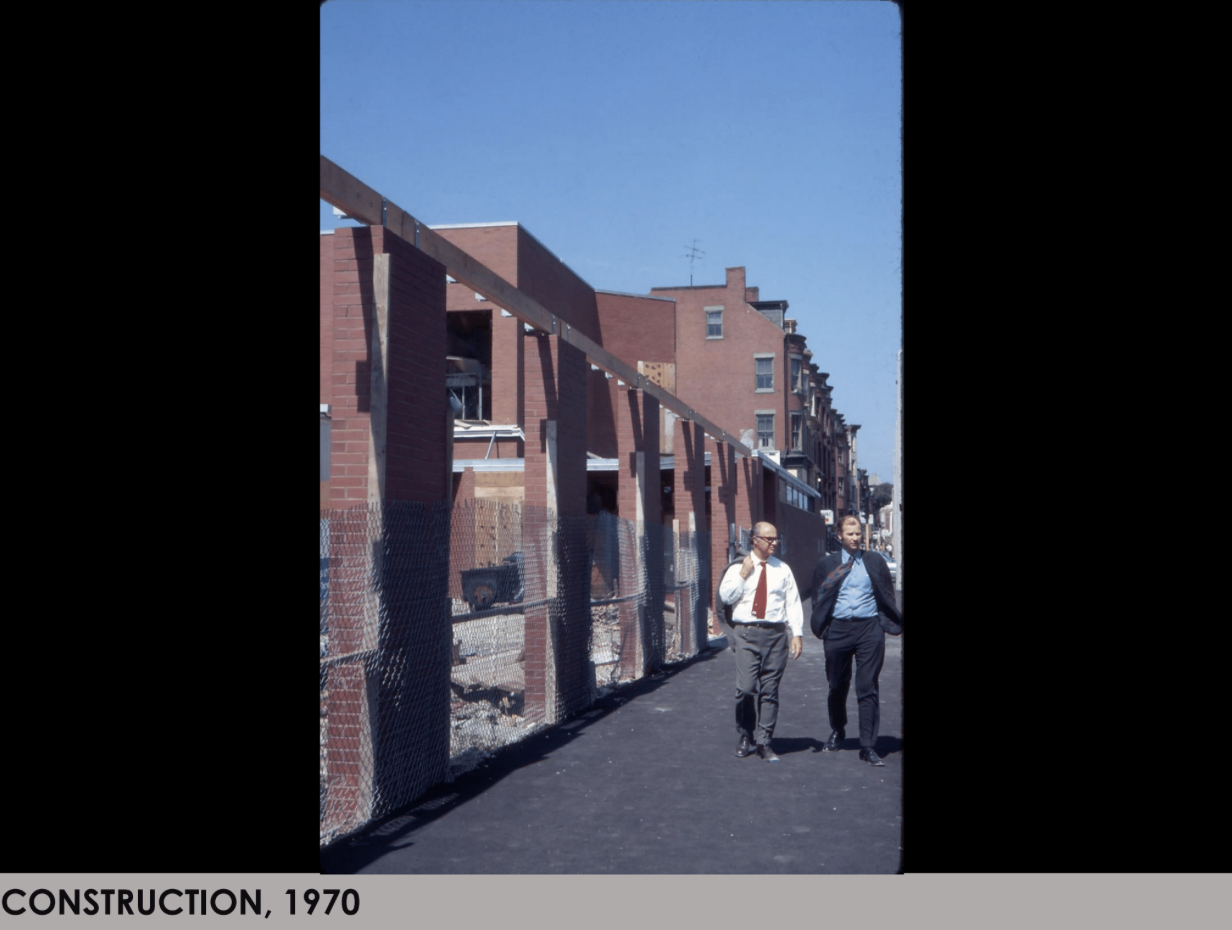No less than five vocalists sang their hearts out on Tuesday night, August 20, when the Nephrok’s Allstar band brought the Motown sound to Library Park and all the surrounding roof decks, patios and open windows around the South End library. An unusually warm and humid night where not a drop of rain tried to spoil the fun set the stage for a melodic and high-energy performance that brought some in the audience to their feet. They danced alone, with partners, with their infants and toddlers and a few with their puppies, not surprising in the pet-loving South End neighborhood.
Vocalists Sarah Seminski and Nephtaliem McCrary sing with Daniel Day (guitar), Pat Loomis (saxophone) and Scott Aruda (trumpet).
In the third of the four outdoor Jazz & Blues concerts of the 2019 season in Library Park, Nephtaliem McCrary and Sarah Seminski played into each other’s powerful renderings of Marvin Gaye and Tammy Terrell’s Ain’t Nothing Like the Real Thing and Stevie Wonder’s For Once in My Life. The other vocalists, saxophonist Pat Loomis, trumpetist Scott Aruda and keyboardist Ben Hillman joined them in subsequent titles, including I Heard It Through The Grapevine (Gladys Knight and The Pips); You Can't Hurry Love (Diana Ross and The Supremes); Ain't Too Proud To Beg and My Girl (both by The Temptations). Musicians Charlie Hunt (guitar), Daniel Day and Benny Benson (drums), playing with their usual skill and enthusiasm, were warmly received by the audience for their return performance.
Aiden Loomis receives a birthday cake after his dad, pat, sang Birthday by The Beatles for him.
Pat Loomis sang the last number for his son Aiden, who had requested it for his birthday. It was Birthday by The Beatles. A chocolate birthday cake came with the personal performance.
Next week, Tuesday August 27, another beautiful late-summer night is predicted by the FOSEL weather team, which this year has a special dispensation from the gods of rain..they plan to stay away.
A happy and engaged audience fills Library Park, with many others hanging over the fence on Tremont Street
Ben Hillman on keyboard, Charlie Hunt, guitar and Benny Benson on drums accompanying singer Sarah Seminski

























































































